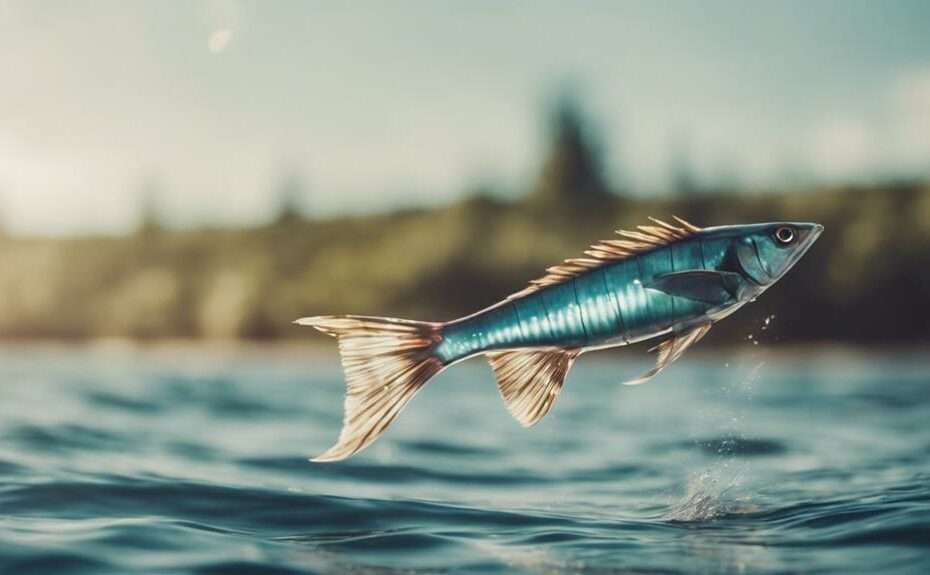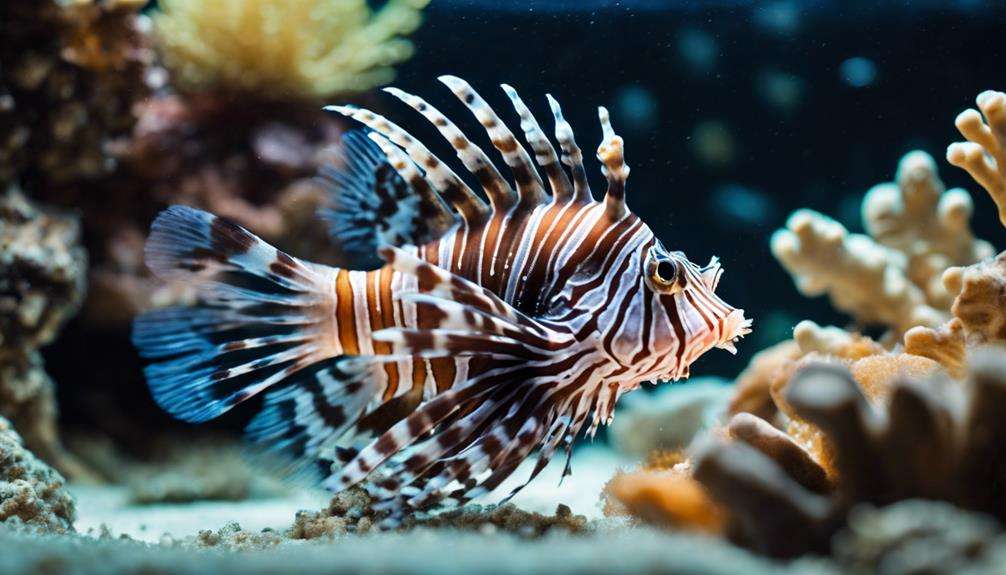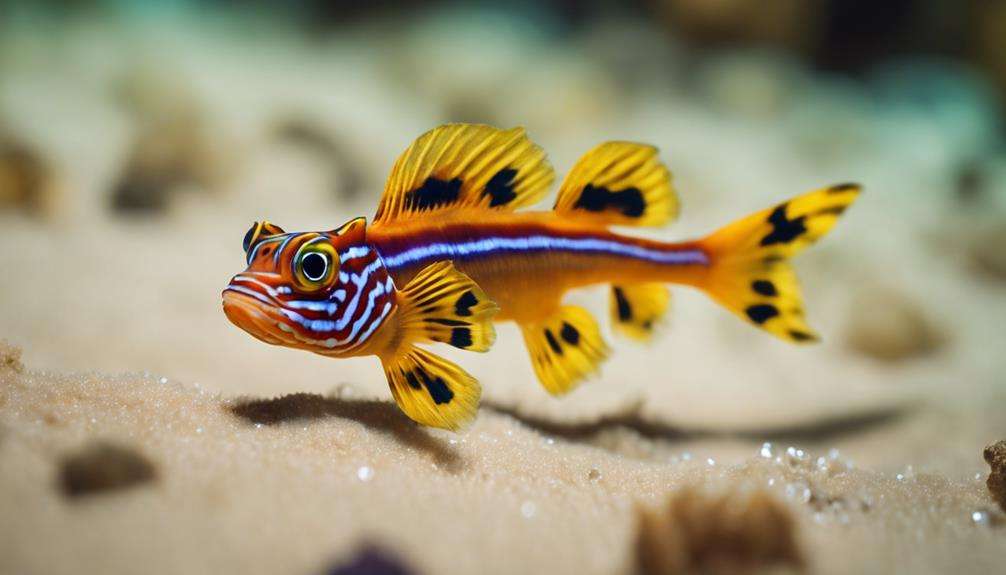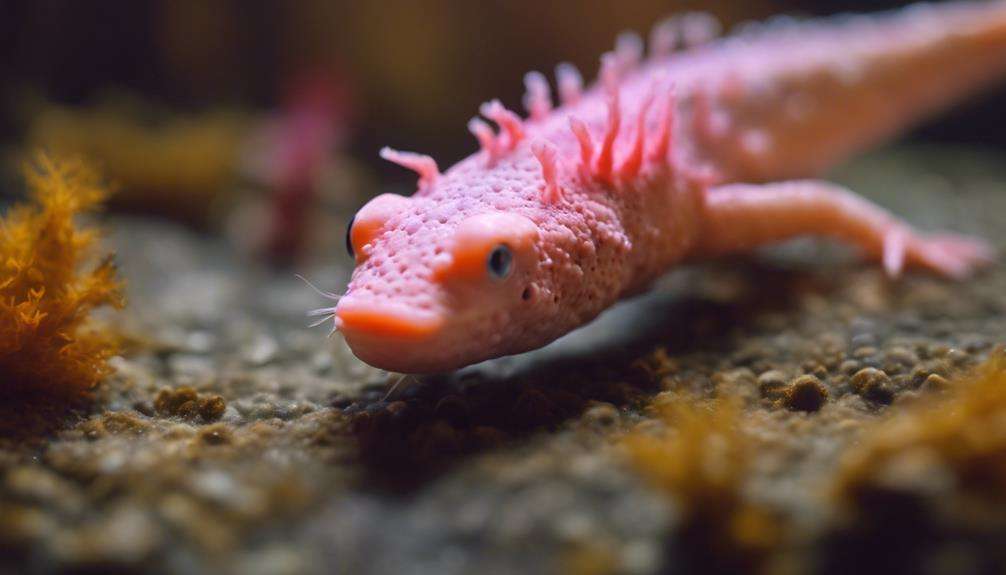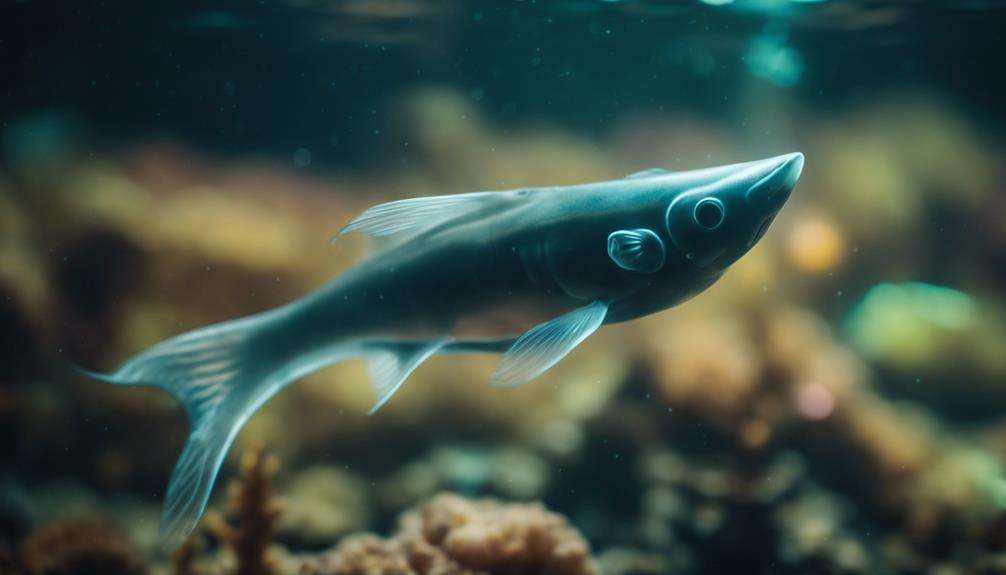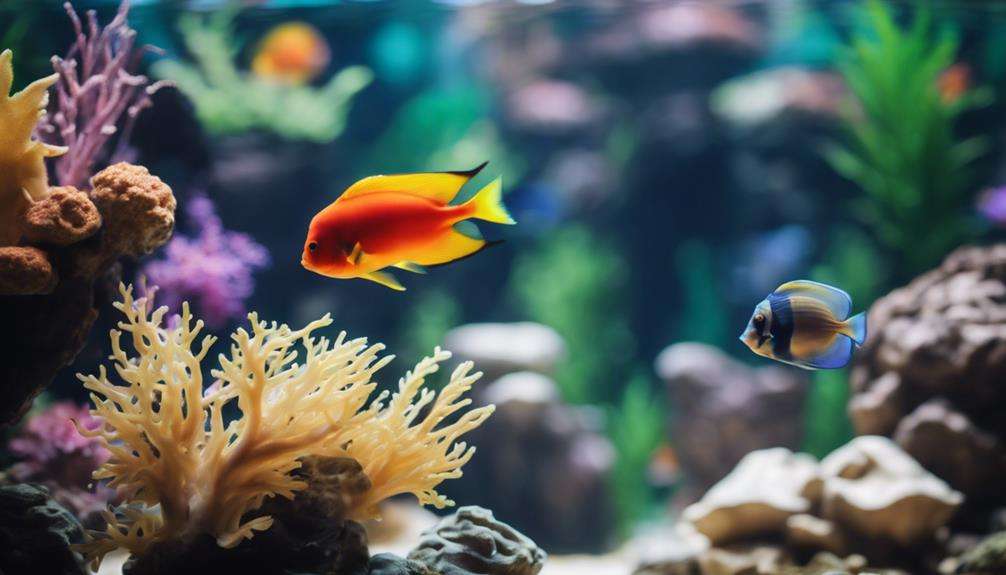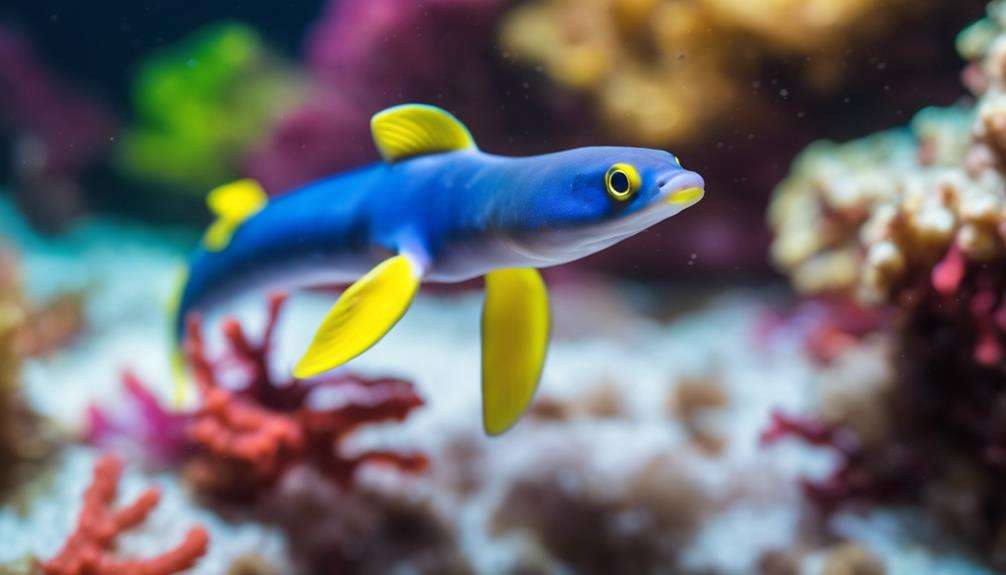If you were to compare the adaptations of flying fish to a well-crafted piece of machinery, you would see how intricately designed and precisely tuned these aquatic creatures are for their unique abilities.
The way flying fish navigate between two vastly different environments is a marvel of nature, but what truly sets their adaptations apart?
Stay tuned to uncover the remarkable features that make flying fish stand out in the world of evolutionary marvels.
Key Takeaways
- Highly modified pectoral fins enable efficient gliding and swift movements.
- Aerodynamic body shape reduces drag, enhancing flight capabilities.
- Streamlined physique aids in agility for transitioning between air and water environments.
- Specialized metabolic adaptations support sustained flight and endurance.
Unique Morphological Adaptations
Flying fish possess unique morphological adaptations that enable them to navigate seamlessly between the air and water environments with remarkable efficiency. Their highly modified pectoral fins serve as wings, allowing them to glide through the air with grace and agility. These fins are essential for achieving lift and sustaining flight, showcasing the flying fish's exceptional gliding ability.
In addition to their specialized fins, flying fish exhibit a streamlined body and torpedo-like shape that enhance their speed and efficiency in both aerial and aquatic locomotion. The combination of their aerodynamic body structure and powerful fins enables them to dart through the air and water with precision. This streamlined design not only aids in reducing drag but also contributes to their swift movements.
The gliding ability of flying fish, supported by their unique fins, showcases an evolutionary marvel that allows them to escape predators and cover significant distances efficiently. These adaptations highlight the incredible versatility and agility of flying fish in transitioning between different elements seamlessly.
Specialized Fins and Tail
With large, highly modified pectoral fins acting as wings for gliding above the water surface, flying fish showcase remarkable agility and efficiency in navigating between different environments. These wing-like pectoral fins are a marvel of evolution, providing flying fish with the lift needed to glide over considerable distances.
Additionally, the tail flicking mechanism of flying fish allows for powerful propulsion, enabling quick bursts of speed when launching out of the water and sustaining flight while airborne. The coordination between their specialized fins and tail is a testament to the precision of nature's engineering, allowing flying fish to seamlessly transition between swimming and gliding modes.
This finely tuned system of propulsion and control is essential for these oceanic acrobats to evade predators and cover significant distances in search of food or suitable habitats. The adaptation of their fins and tail sets flying fish apart as masters of both the sea and the sky, embodying the beauty of specialized evolution.
Aerodynamic Body Shape
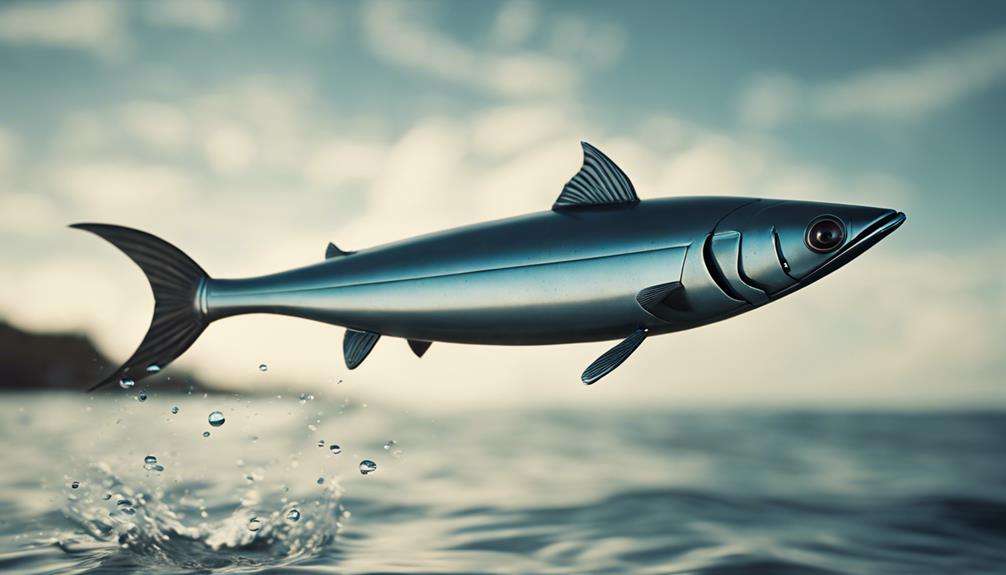
Sleek and streamlined, the body shape of flying fish is meticulously designed to reduce drag and enhance aerodynamics for proficient gliding. Their torpedo-like physique is essential for minimizing air resistance during flight, allowing them to cover extensive distances with efficiency.
This streamlined body shape enables flying fish to achieve lift and stability in the air, extending their gliding capabilities. The elongated structure of their body facilitates swift movement through both air and water, aiding in evading predators effectively. Transitioning seamlessly between swimming and flying modes, the unique body design of flying fish showcases agility and speed.
The aerodynamic features of their body play a crucial role in their ability to glide effortlessly, showcasing a remarkable adaptation that sets them apart in the realm of marine life.
Hydrodynamic Features for Gliding
Your exploration of flying fish hydrodynamic features begins with their wing-shaped pectoral fins, crucial for efficient gliding as they harness lift like airplane wings.
These fins, when combined with the fish's streamlined body and torpedo-like form, minimize resistance and enhance aerodynamic performance while soaring above the water's surface.
Additionally, the stability provided by their tail fins plays a vital role in maintaining control and direction during flight, allowing flying fish to navigate seamlessly through their aerial environment.
Wing Shape Efficiency
Demonstrating exceptional hydrodynamic efficiency, flying fish possess wing-shaped pectoral fins that excel in gliding through the air with reduced drag, enabling sustained flight over water. The unique design of their wings aids in generating lift and maintaining stability during flight. Here are three key features that highlight the efficiency of flying fish wing shapes:
- Streamlined Form: The streamlined shape of their wings minimizes air resistance, allowing flying fish to cover significant distances while gliding effortlessly.
- Evolutionary Adaptations: The specialized wing structure of flying fish showcases evolutionary adaptations for aerial locomotion from aquatic environments.
- Reduced Drag: The hydrodynamic design of their wings significantly reduces drag, enhancing their ability to glide for extended periods over the water.
Tail Fin Stability
With their streamlined pectoral fins optimizing aerodynamic efficiency for gliding, flying fish further enhance their airborne stability through tail fin hydrodynamic features.
The tail fin design of flying fish is crucial for maintaining control and direction during gliding above the water's surface. These specialized adaptations in the tail fin play a significant role in helping flying fish achieve lift and effectively control their flight path.
The unique shape and structure of the tail fin enable flying fish to navigate and maneuver with precision in the air. Tail fin stability is paramount for the flying fish's overall aerodynamic performance, contributing significantly to their successful gliding capabilities.
The intricate design of their tail fin ensures efficient hydrodynamics, aiding in their ability to glide effortlessly through the air.
Ocular Adaptations for Aerial Vision
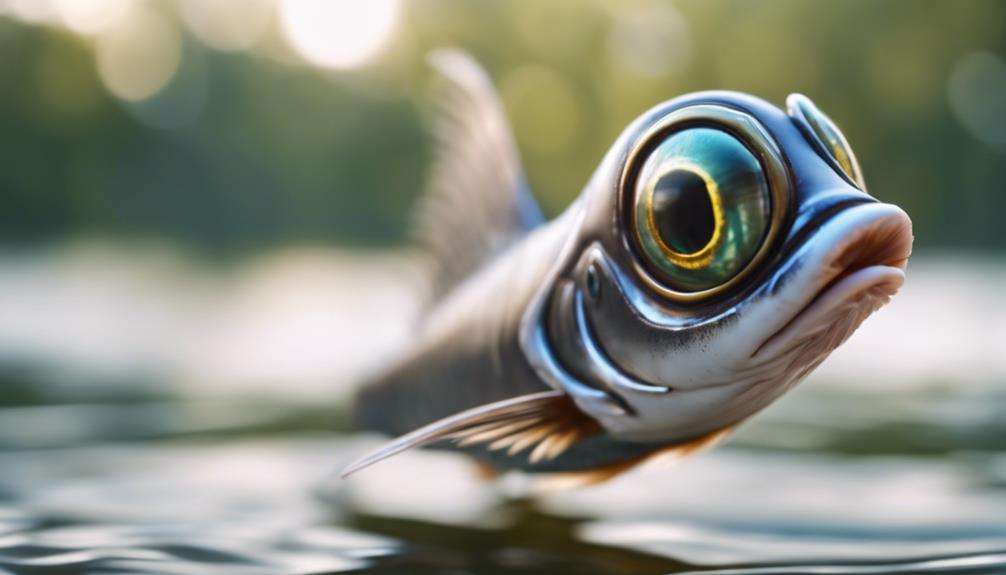
Flying fish exhibit remarkable ocular adaptations that enhance their aerial vision, allowing them to navigate swiftly between air and water environments. These adaptations include specialized oculomotor muscles that enable them to rotate their eyes upward, optimizing their vision in the air.
Additionally, their eyes are uniquely adapted to function effectively in both air and water, aiding in the identification of predators and suitable landing spots. Flying fish possess a high density of cone cells in their retinas, essential for sharp color vision crucial for navigation.
This heightened color vision allows them to discern obstacles and make split-second decisions during their aerial glides, ultimately increasing their chances of survival. The ability to process visual information rapidly enables flying fish to adjust their flight path swiftly and avoid potential threats, showcasing the significance of their ocular adaptations for successful aerial navigation.
Behavioral Adaptations for Predation
Flying fish employ various behavioral adaptations to evade predators effectively. They utilize hunting strategies, employ camouflage techniques, and rely on their remarkable speed and agility.
Observing these adaptive behaviors provides insight into the survival mechanisms of flying fish in their natural habitats.
Hunting Strategies Used
Utilizing their swift swimming capabilities and efficient tail propulsion, flying fish employ a variety of hunting strategies as behavioral adaptations for predation. These strategies include:
- Ambush Predation: Flying fish wait near the water's surface and swiftly attack unsuspecting prey below, utilizing their speed and agility to catch them off guard.
- Surface Skimming: They glide above the water, using their pectoral fins to maintain momentum, and dip down to snatch prey from the surface before quickly ascending back into the air.
- Schooling Behavior: Flying fish often hunt in groups, coordinating their movements to herd prey into a confined area, making it easier for them to catch and consume their target efficiently.
These strategies showcase the remarkable predatory adaptations that flying fish have developed to thrive in their marine environment.
Camouflage Techniques Employed
With their torpedo-like body shape and silvery scales, flying fish expertly employ camouflage techniques to blend seamlessly with the water, enhancing their ability to evade predators in their marine environment.
Their streamlined body allows them to move swiftly and efficiently, aiding in predator evasion. By appearing as a shimmering blur in the water, flying fish make it challenging for predators to lock onto them as prey. This camouflage strategy helps them remain hidden from sight, increasing their chances of survival.
When threatened, flying fish can quickly change direction, utilizing their streamlined form to escape predators. These camouflage techniques are crucial for flying fish as they navigate the vast oceans, constantly on the lookout for potential threats that may lurk beneath the surface.
Speed and Agility
In their quest for survival, flying fish exhibit remarkable speed and agility, enabling them to outmaneuver predators in their marine environment.
Key Points:
- Flying fish utilize their swift swimming capabilities to evade predators effectively.
- Their behavioral adaptation of jumping out of water allows them to escape with agility.
- By utilizing their tail for propulsion, flying fish can swiftly change direction to avoid predators.
Flying fish have evolved to excel in speed and agility, essential traits that aid in their ability to fly through the air and escape imminent threats.
Their efficient predator evasion tactics, coupled with their streamlined body shape, give them the edge in outmaneuvering potential dangers in their aquatic realm.
Reproductive Strategies and Adaptations
Flying fish exhibit a unique reproductive strategy where females release hundreds of eggs near the ocean surface for males to fertilize, ensuring the continuation of their species.
During the spawning season, millions of flying fish gather near the water's surface in a synchronized reproductive dance. This mass congregation increases the chances of successful fertilization, essential for the survival of the species.
The eggs released by the females are often attached to seaweed for protection and camouflage, safeguarding them from predators. This clever adaptation not only enhances the survival rate of the eggs but also aids in the hatching process.
The commercial significance of flying fish extends to their edible qualities, with their roe being highly sought after in various regions.
The reproductive strategies of flying fish showcase the intricate adaptations these remarkable creatures have evolved to ensure the continuation of their lineage in the vast oceans.
Metabolic Adaptations for Flight
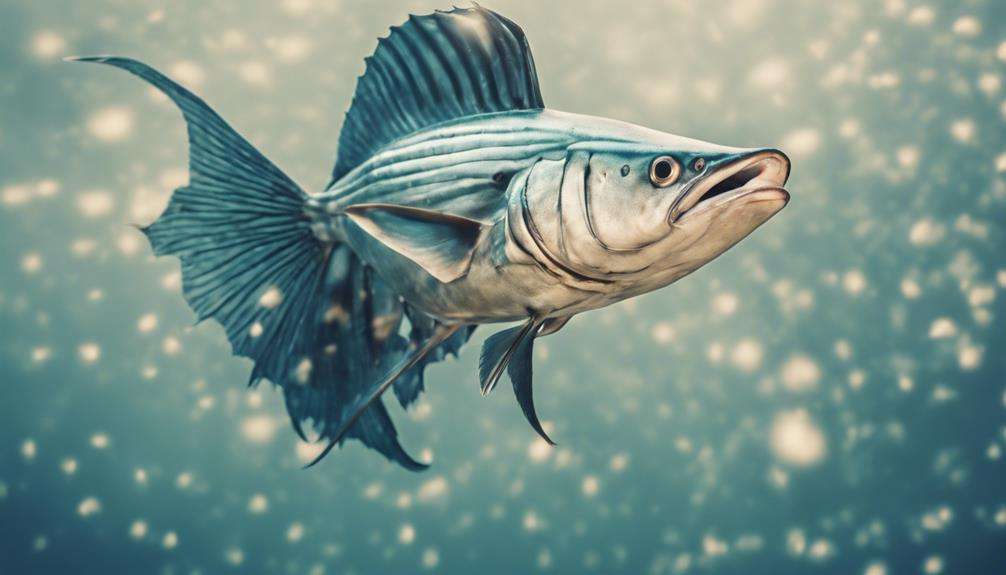
Demonstrating remarkable efficiency, the metabolic adaptations of flying fish enable sustained flight by optimizing muscle endurance, energy storage, and oxygen utilization.
- Muscle Endurance: Flying fish have muscles adapted for prolonged activity, allowing them to support continuous gliding through the air. These muscles are specialized to withstand the demands of extended flight, ensuring that the fish can cover considerable distances.
- Energy Storage Mechanisms: Specialized energy storage mechanisms in flying fish provide the necessary fuel for their flights. These mechanisms ensure that the fish have access to energy reserves that can be efficiently utilized during consecutive glides, enabling them to remain airborne for extended periods.
- Efficient Oxygen Utilization: Flying fish have evolved highly efficient systems for utilizing oxygen. This adaptation allows them to meet the increased oxygen demands associated with aerial locomotion, ensuring that their metabolic processes can sustain the energy requirements for consecutive glides.
Environmental Adaptations for Survival
With specialized torpedo-like body shapes and swift swimming capabilities, flying fish have developed efficient propulsion mechanisms essential for their survival in both aerial and aquatic environments. These adaptations allow them to swiftly escape predators both in the water and when gliding above the surface.
One key adaptation is their ability to breathe outside of water, enabling them to transition seamlessly between flying and swimming. Flying fish utilize their large fins for quick escapes when needed, along with their streamlined body shape that aids in rapid movements through the air and water. Their tail plays a crucial role in propulsion, helping them reach high speeds to evade threats effectively.
Additionally, flying fish have evolved to swim with their heads down, reducing water resistance and increasing their speed. When faced with danger, they can launch themselves out of the water and glide for significant distances, showcasing their remarkable environmental adaptations for survival.
Evolutionary Significance of Adaptations
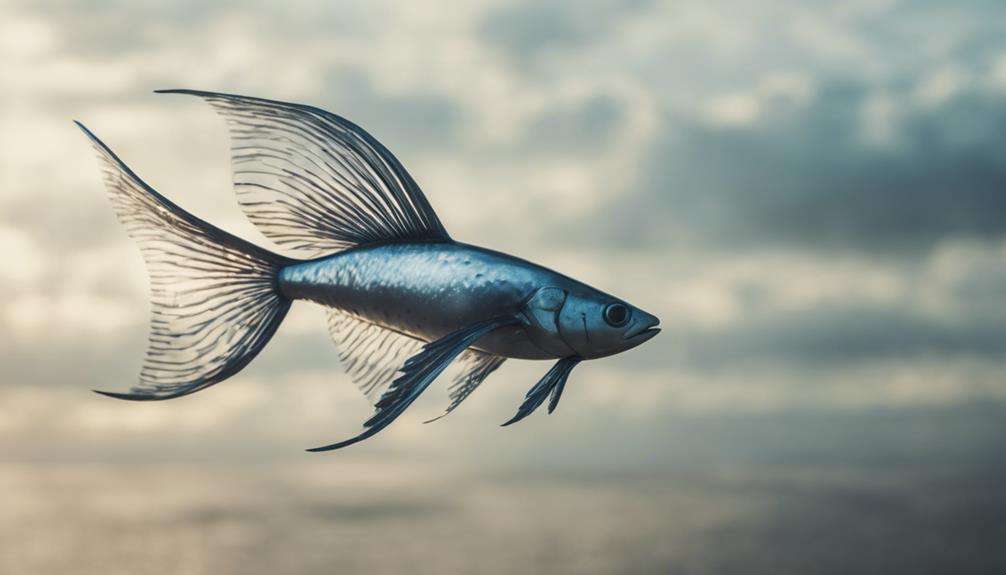
Flying fish adaptations hold significant evolutionary value, showcasing the intricate process of natural selection and adaptation over time. Their streamlined bodies, efficient use of fins, and specialized locomotion mechanisms highlight the role of these adaptations in their survival within the ecosystem.
The evolutionary significance of flying fish adaptations extends beyond mere physical traits, offering a deeper understanding of how species evolve to thrive in their environments.
Adaptations for Survival
Adaptations for survival among flying fish have evolved over millions of years, shaping their anatomy and behavior to enhance their chances of thriving in both aerial and aquatic environments. These adaptations include:
- Winglike Pectoral Fins: The evolution of specialized pectoral fins allows flying fish to glide above water, providing lift and stability during their aerial escapades.
- Streamlined Body Shape: The torpedo-like body structure aids in swift movement, reducing drag both in water and air, enabling efficient gliding and quick escapes from predators.
- Tail Flicking Mechanisms: The tail flicking mechanisms provide propulsion, allowing flying fish to reach impressive speeds underwater, up to 37 miles per hour, crucial for evading predators and ensuring survival in their dynamic habitats.
Role in Ecosystem
Evolving within intricate marine ecosystems, the adaptations of flying fish play a crucial role in shaping their ecological significance and evolutionary success. Flying fish possess remarkable capabilities that allow them to glide in the air, skimming the water's surface to escape predators and seek out prey efficiently.
This unique ability to soar above the ocean surface not only aids in predator evasion but also enables flying fish to cover considerable distances, expanding their foraging range and increasing their chances of survival. By utilizing their adaptations to glide through the air, flying fish demonstrate a specialized niche within the marine ecosystem, showcasing the evolutionary significance of their unique traits in navigating and thriving in the vast ocean environment.
Frequently Asked Questions
What Makes Flying Fish Unique?
You see, flying fish are unique due to their aerodynamic fins and wing-like structure. These features allow them to glide through air and water effortlessly. Their specialized adaptations make them exceptional creatures in both realms.
What Are the Evolutionary Advantages of Flying Fish?
Flying fish possess evolutionary benefits that enhance their survival in the marine environment. Their unique adaptations, like streamlined bodies and specialized fins, provide ecological significance by enabling them to efficiently transition between flying and swimming, escaping predators effectively.
How Do Flying Fish Protect Themselves?
When flying fish protect themselves, they rely on camouflage techniques and swift escape strategies. Their predator evasion skills are top-notch, utilizing their body shape and quick reflexes to outsmart danger in the water.
What Are the Physical Characteristics of Flying Fish?
Flying fish have aerodynamic fins for propulsion and jumping. Their hydrodynamic body shape enhances speed. Gills enable breathing outside water. Tail flicking mechanism aids swift movement. Strong tail muscles help efficient propulsion.
Conclusion
As you marvel at the incredible adaptations of flying fish, remember: 'Necessity is the mother of invention.'
These unique morphological, behavioral, and physiological adaptations have allowed flying fish to thrive in both aquatic and aerial environments.
Their specialized fins, aerodynamic body shape, and quick reflexes showcase the remarkable evolution and survival strategies of these fascinating creatures.
So next time you see a flying fish soaring through the air, appreciate the beauty of nature's ingenuity at work.
